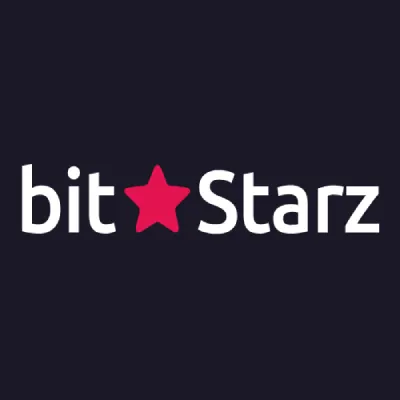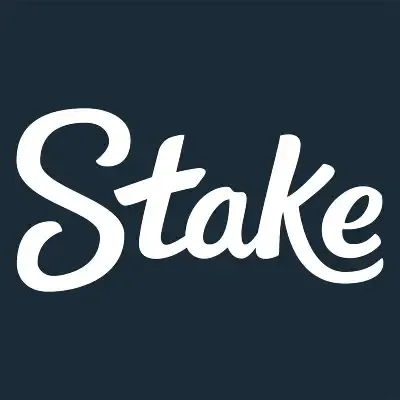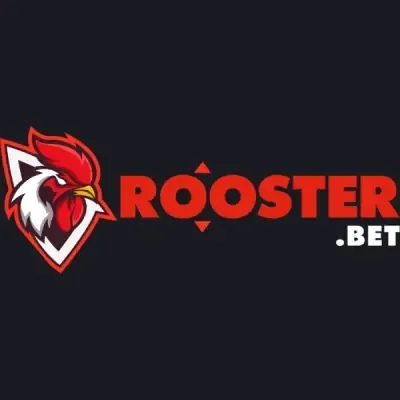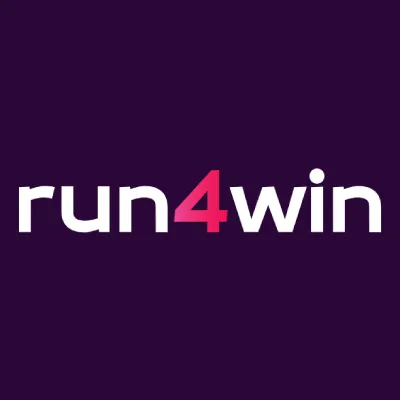
How Blockchain Works and Why It Matters Today
Blockchain–synonymous with terms like Bitcoin, crypto wallets, and tokens–serves as the underpinning infrastructure of Web3 technology. The technology is no longer limited to just decentralized tokens–as there is a distinct difference between the blockchain and cryptocurrency–but as a whole, it continues to make its mark on multiple industries, serving as a decentralized, transparent, and tamper-proof mechanism.
From its early beginning as a niche technological concept to supporting crypto tokens, the evolutionary advancement in the modern internet has been a sight to behold. What is the crypto blockchain? But how does cryptocurrency work through the blockchain? Is it a mere currency or a fancy ledger in cryptocurrency?
Let’s take a deep dive into a comprehensive understanding of blockchain technology and how does it work, including its consensus mechanisms, ledger structures, and real-world implementations, taking an in-depth look at how blockchain is shaping the digital future—and why understanding it is more important than ever.
How Does Blockchain Work?
Blockchain—which was created by combing the words “block” and “coin” is a decentralized digital notebook, where every transaction is grouped as a “block” and cryptographically connected via a “chain”. It records transactions over the decentralized network, making them secure, immutable, and transparent, which is the foundational leverage for modern cryptocurrencies.
Here is how it works.
1. Transaction Initiation:
How do crypto wallets and blockchain work? When a user initiates transactions—sending 0.0001 BTC to another user for goods and services using a crypto wallet—the transaction initiation process begins. A crypto wallet is a digital tool that stores private and public keys and can authorize transactions on the tokenized network—these interactions are instantly updated on the distributed ledger other than cryptocurrency.
2. Transaction Validation and Consensus:
Afterwhich, the nodes within the peer-to-peer network validate the transaction after initiation—checking if the user does have ownership of 0.0001 BTC—using consensus algorithms such as Proof of Work (PoW) in Bitcoin or Proof of Stake (PoS) in Ethereum.
3. Block Formation:
Once the transaction is approved, the block formation process begins. The 0.0001 BTC transaction is grouped with other multiple verified transactions that are occurring on the same network around the same time.
The block validation factors in the speed and type of consensus, where the time is validation, are different for popular cryptos like Bitcoin—up to 10 minutes per block, Ethereum—up to 15 seconds, and Solana—up to 0.4 seconds.
4. Block Linking:
Subsequently, the newly formed block is sealed and added to the chain—creating an immutable record—by linking it to the previous block in the chain using cryptographic hashes.
5. Distributed Ledger Update:
When the new block is added to the chain, the version of the decentralized database is distributed and synchronized across all nodes almost instantly,
6. Finality:
While the distributed ledger update does mean that the transaction is recorded in a block, there is a waiting period—where a few more blocks are added to the chain—called finality, ensuring the transaction is final and irreversible.
The length of finality depends on the network like Bitcoin—around 6 confirmations, which takes roughly 60 minutes; Etherum–around 12-15 blocks, which takes up to 3 minutes; and Solana—usually a few seconds.
Blockchain in Crypto Digital Ledger Example:
Imagine you are in a coffee shop (decentralized network), ordering a coffee, using your crypto wallet to pay 0.0001 BTC for your coffee, which initiates a transaction.
The barista (node) checks the balance to verify that your wallet has the required amount of BTC (transaction validation), following the store’s policy for verification—the PoW and PoS consensus—to make sure the transaction is genuine.
Post validatation, your coffee order is brewed up with other validated coffee orders around the same time (block formation), like perparing several drinks in one batch.
When your coffee is ready, the barista marks your order as complete and adds it to the store’s transaction log (block linking). The present-day log is linked to the entries from the day before using a secure code (cryptographic hashes).
Finally, all coffee shop branches—other nodes in the same network—update their transaction ledger, which now contains a record of your order (updating a distributed ledger in crypocurrency).
Also Read: Crypto Casinos or Traditional Gambling: Which to Choose?
Blockchain: Why It Matters?
Web3 has taken a giant leap in technological evolution, opening up its potential beyond cryptocurrencies—toward integrating finance, healthcare, logistics, and government sectors to make a lasting impact through decentralization, transparency, and security.
Finance Sector:
The finance sector will largely benefit from distributed integration—just like it did with cryptocurrencies–by facilitating faster, secure, and lower-cost transactions. These transactions can happen in real-time, both nationally and internationally, going beyond borders without any compromises. Is blockchain used only for cryptocurrency uses? No—its applications in finance are broader than digital currency.
Mastercard is aiming to build out its blockchain and crypto capabilities for consumers and finance firms, replicating its massive card network for the decentralized world to make digital asset transactions convenient for all.
Healthcare Sector:
On the other hand, the healthcare sector prioritizes integrity, security, and privacy of curial information—patient history, treatment plans, and insurance records—which is also achievable with ledger-based protocol. The tokenized network addresses these challenges to craft immutable and auditable records accessible by authorized parties.
The distributed ledger will be beneficial for all parties involved, where multiple doctors across different hospitals have access to the same updated records of the patient, like prescriptions, in turn streamlining the treatment process while allowing patients to have complete control of their medical records.
Supply Chain Sector:
Similarly, the immutable transaction records are key trustless system characteristics that enhance transparency and traceability. These records are conveniently trackable—highlighting the origins of goods to the consumers—to provide better transparency and prevent any fraudulent activities.
Walmart—in collaboration with IBM—has implemented a blockchain-based system to track the food products for better transparency, covering its point of origin and journey from the farm to the store. It allows for faster identification of contamination sources to respond to potential food safety issues.
Voting System Sector:
The chain-based technology benefits are crucial in establishing integrity in the voting sector. The goal is achieved by ensuring tamper-proof, immutable, and transparent records for each cast and counted vote—allowing voters to verify their selection—increasing transparency and trust in the electoral process. India had implemented a Voted Verifiable Paper Audit Trail (VVPAT) with Electronic Voting machines (EVMs) in 2013.
Also Read: Mastering Accumulator Bets: Your Ultimate Guide and Calculator
Types of Blockchains
It should be noted that such tokenized applications are not limited to public blockchains but are rather customizable according to the industry-specific needs and requirements—classified as Public, Private, Consortium, and Hybrid—as determined by sector-defined use cases.
Public Blockchain:
Public chains are open to all participants within the network—like Bitcoin and Ethereum, where transactions are transparent and immutable—to read, write, or validate. It builds trust and security as the as the number of participants increases—these networks deploy consensus mechanisms like Proof of Work (PoW) and/or Proof of Stake (PoS)—which inevitably increases the scalability and energy complexities due to the extensive validation process.
Private Blockchain:
Private chains are not open to all participants within the network, limiting access for specific participants and controlling permission to read, write, and validate as governed by the organization for the organization. The centralized control approach like Hyperledger Fabric—unique to private blockchains—improves data efficiency, privacy, and security but inadvertently leaves room for potential errors due to single-point reliance.
Consortium Blockchain:
Consortium chains combine the interactive participation of public networks with the permission-centric approach of the private networks—multiple organizations within the same network can collaborate and share consensus responsibilities. Aura Consortium is the consortium-based tokenized network solution for luxury brands—like LVMH, OTB, Prada Group, and Cartiere—to validate product authenticity and supply chain transparency.
Hybrid Blockchain:
Hybrid chains are tailored to enterprise-specific requirements—combining the benefits and elements of both private and public networks—where sensitive data and transactions are private and accessible to authorized participants but provide enough flexibility to maintain and promote public transparency and security. These kinds of chains are crucial in the finance sector, where accounts should maintain authorized accessibility as well as transparency.
Blockchain and Cryptocurrency Interrelation
The interrelationship between the blockchain and cryptocurrency is the most prominent. The symbiotic nature between the two is well-documented—as the popularity of crypto coins has pushed the technology to the mainstream, where it has allowed the decentralized network to flourish in other sectors.
Nevertheless, the symbolic relationship between the two has created a fair amount of confusion as to whether or not Blockchain and Cryptocurrencies interrelate. In short, the functioning of the Bitcoin blockchain is a digital currency that runs on a blockchain—the underlying technology that can support various cryptocurrencies and even non-financial applications.
While Bitcoin was created to support peer-to-peer transactions, these are no longer limited to just financial scope—pushing boundaries toward smart contracts and decentralized applications like gaming and decentralized finance (DeFi)—as demonstrated by Ethereum and Solana, evolving beyond its original use case.
Bitcoin uses the UTXO model, which maintains unspent outputs to calculate user balances and treats transactions as a series of inputs and outputs for more parallel processing. Ethereum, in contrast, employs account-based architecture to adjust account balances instantly with every transaction. While this model is easier to implement for smart contracts, it can encounter challenges related to scalability and parallel processing.
On the other hand, Solana—which uses a unique variation on the account-based model—treats all data as accounts. It organizes its state management efficiently by assigning an "owner" to each account to enhance security while enabling high throughput and low latency, making Solana ideal for scalable dApps, NFT marketplaces, and DeFi protocols.
Quick Guide to Creating a Blockchain for Cryptocurrency
By understanding the interrelation between crypto and cryptocurrency, users can leverage the technology to create a new digital coin if need be. Though the process requires comprehensive understanding to navigate through its complexities, the overall process can be overally simplified into four steps.
- Define the Consensus Mechanism: The first step starts by defining the consensus mechanism—PoW and PoS—a process that maintains the chain integrity and validates transactions.
- Specify Block Size: The second step of the process begins after specifying the block size—the amount of transactional data a batch can hold—along with block time—the average time to generate a new block.
For reference, the block size of Bitcoin is 1 MB, and block time is 10 minutes. - Create the First Block: The third step is the creation of the first block with predefined parameters—the Genesis block—which serves as the foundation for succeeding blocks.
- Build the Network: After creating a genesis block, the nodes interconnect with each other to create a network—to achieve decentralization and security—through node software and node incentives to encourage participation.
Since the overall process requires comprehensive effort and resources, users can use existing platforms to simplify the process of creating a new cryptocurrency from already established platforms—such as Ethereum’s ERC-20 standards for Tether (USDT).
Also Read: Best European Online Casinos: Top 10 Picks, Epic Bonuses & Pro Tips
Blockchain vs Cryptocurrency: Key Differences
| Category | Blockchain | Cryptocurrency |
|---|---|---|
| Definition | Decentralized digital ledger that records transactions across a network | Decentralized digital currency that operates on a blockchain network |
| Role | Securly records and verifies transactions across a distributed network | Financial currency to buy, trade, and exchange services online |
| Scope | Applicable in different sectors | Used in financial ecosystems |
| Dependency | Serves multiple purposes and is not limited to digital coins | Reliant on Blockchain technology for operations and existence |
| Examples | Bitcoin Network, Ethereum Network, Solana Network | Bitcoin (BTC), Ethereum (ETH), Solana (SOL) |
Blockchain and Distributed Ledger Technologies (DLT) Interrelation
Similarly, the similarities between Distributed Ledger Technologies (DLT) and Blockchain are connected by a common thread—yet these are distinctly different concepts. Both implement decentralization at its core for data management across multiple nodes—as such, all blockchains are forms of DLT, but not all DLTs are blockchains.
Blockchain structures the data into blocks—implements consensus mechanism to maintain nodes agreements—linking them cryptographically into chains. Whereas the DLT implements a broader concept where data structuring is not confined within blocks—but implements similar distributed ledger through agreed upon consensus mechanisms—allowing for flexibility and adaptability depending on specific privacy, speed, and access requirements. To explore various DLT-based tokens, one can refer to a DLT crypto list.
This interrelationship and stark difference between the two highlight the potential of decentralizations that expand beyond ledger technology.
Example:
Hedera Hashgraph is the most popular implementation of DLT—offering an alternative to blockchain—which uses an asynchronous Byzantine Fault Tolerance (aBFT) consensus mechanism (combination of Gossip about Gossip and Virtual Voting) that guarantees instant finality with key benefits including higher scalability, security, fairness, and low energy usage. The less energy.
Also Read: Blockchain Casino Games: Which Offers the Best Payouts?
Blockchain vs DLT: Key Differences
| Category | Blockchain | DLT |
|---|---|---|
| Definition | Type of DLT that stores data in blocks and links them into chains | Decentralized database that is shared and synchronized across multiple nodes |
| Role | Immutable and transparency using blocks and cryptographic hashes that use PoW and PoS | Decentralized record-keeping without block structure that uses virtual voting and gossip protocols |
| Scope | Limited to block-based systems | Includes different types of DLT models |
| Dependency | Depends on DLT principles | Not dependent on blockchain structure |
| Example | Cryptocurrency, DeFi, NFTs, Smart Contracts | Supply Chain Tracking, Digital Identity, Interbank Transfers |
Common Misconceptions about Blockchain
Chain-based technology has brought forward groundbreaking innovations, however, there are still a few misconceptions surrounding it due to its oversimplifications. Therefore, it is crucial to understand these common misunderstandings to get a clearer picture.
Negative Environmental Impact
Bitcoin’s PoW notoriously consumes high energy (~175 TWh/year), creating a questionable impact on the environment. Ethereum transitioned from Proof of Work (PoW) to Proof of Stake (PoS) in 2022—in a shift called The Merge—reducing energy consumption by over 99.95%. Fast forward to the present, and modern DLT and tokenized platforms have switched to a more energy-efficient and sustainable approach.
Scalability Limitations
Scalability limitations are yet another common misconception—a large number of nodes leads to slower transaction speed and higher network fees. Nevertheless, Solana directly challenges this notion by implementing a combination of Proof of History (PoH) and PoS—capable of processing 65000 transactions per second (TPS) under optimal conditions and 2000 to 4500 TPS in practice—in contrast to 7 TPS for Bitcoin and 30 TPS for Ethereum.
Interoperability Between Blockchains
Another well-known myth is that the Chain-based cryptos are isolated inside their environment, and thus interoperability across other decentralized networks is restricted. The Cosmos project challenges this notion with the Inter-Blockchain Communication (IBC) protocol, which enables secure and trustless communication between independent chains seamlessly.
Security
Although secure through decentralization and cryptography, immutable ledgers are not invincible. These platforms are susceptible to exploits and smart contract manipulations. Therefore, it is essential to exercise caution.
Conclusion
After going through a remarkable evolution—from a research paper concept to transformative tools that are reshaping industries worldwide—that promotes decentralized, transparent, and tamper-proof methods for transactions. It has become an invaluable asset that justifies its value beyond cryptocurrencies, bringing practical application to finance, healthcare, logistics, and governance sectors to set a benchmark in data integrity and tampering or fraud prevention.
Experiencing the overall development has been one of the most exciting aspects. Decentralized digital transactions are made possible by eliminating intermediaries, lowering transaction fees, and enabling safe, affordable, and quick cross-border transactions. It has been a pivotal stepping stone to improve the security and privacy of records, offering a secure, immutable record that can be accessed by authorized parties while maintaining confidentiality and traceability. Providing a safe, unchangeable record that authorized parties can access while preserving confidentiality and traceability has been a crucial first step toward enhancing the security and privacy of documents.
As this technology continues to evolve, so do the systems built upon it—significantly improving the efficiency of decentralized applications—expanding its role beyond simple transactions, allowing for complex financial services without intermediaries. Despite its promising prowess, it is not without its challenges—from energy-intensive consensus mechanisms to interoperability limitations—which are being addressed in real time. This decentralized technology has become a revolutionary tool that is reshaping the digital landscape as we speak. It has set a strong foundation for a wide range of applications, maturing towards new possibilities for innovation and transforming the way we interact with the digital world.
Blockchain technology is a foundational layer for the digital economy, transforming how we save, exchange, and transact information. It is no longer a luxury but rather a necessity. It is the cornerstone of the digital future, promising a more secure, efficient, and interconnected world—powering decentralized identity, cross-border trade, real-time asset settlement, and global logistics.
Frequently Asked Questions
What is a blockchain? Is it a digital ledger or a cryptocurrency?
A blockchain, in simple words, is a secure, decentralized digital ledger used to record transactions in a tamper-proof and transparent way.
Is blockchain the same as cryptocurrency? What is blockchain technology used in cryptocurrency?
No, blockchain is not the same as cryptocurrency. It is a technology where cryptocurrency is one of its applications.
How do a crypto wallet and blockchain work?
A crypto wallet stores the private keys used to authorize transactions on-chain. It doesn't hold coins but gives you access to them through chain-based records.
How do I create my own blockchain of cryptocurrency?
Yes, you can create your own chain-based of cryptocurrency by defining a protocol, setting up nodes, and establishing a consensus mechanism.
What is a ledger in the blockchain in the cryptocurrency world?
A ledger records all verified transactions across a decentralized network.
What is DLT? How does it relate to blockchain?
Distributed Ledger Technology (DLT) is a broader term for decentralized databases, whereas blockchain is a type of DLT.
Is blockchain only used for cryptocurrencies?
No, the technology is not limited to cryptocurrencies.
What’s the difference between Bitcoin and blockchain?
Bitcoin is a digital currency that runs on block-based technology. In broader terms, blockchain can be used for many applications beyond Bitcoin.
How does cryptocurrency work through blockchain?
Every crypto transaction is verified by a decentralized network, recorded in a block, and added to a permanent ledger.
What are the types of blockchains?
There are four types: Public, Private, Consortium, and Hybrid.
What are real-life examples of blockchain in crypto digital ledgers?
The real-life examples of blockchain in crypto digital ledgers include Bitcoin for payments, Ethereum for smart contracts, IBM Food Trust for supply chains, and India’s voting system.
Are blockchain technology and Bitcoin the same thing?
No, they are not the same thing. Bitcoin is a cryptocurrency, whereas the peer-to-peer network is the technology for Bitcoin.
Does blockchain need Bitcoin to work?
Not really. It can function independently in various sectors like finance, supply chain, or healthcare.







